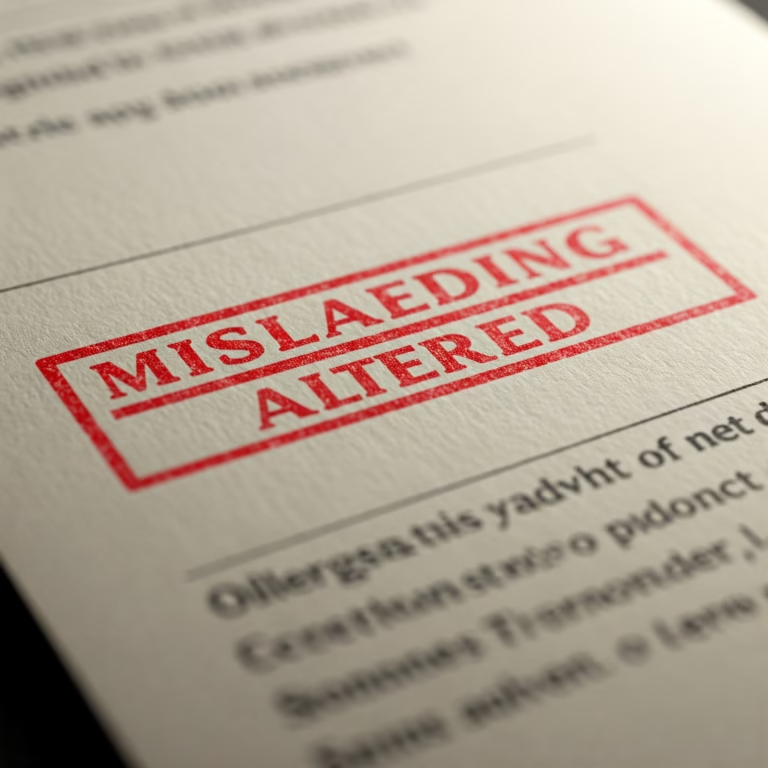
Paraphrasing is an essential skill in translation, yet it is often misunderstood. While translators strive to maintain the original meaning of a text, they must also balance fluency and clarity, sometimes requiring them to restructure sentences or reword phrases. But when should paraphrasing be used? Is it a necessary tool for every translation project, or only in specific cases? In this article, we will explore the role of paraphrasing in translation, the situations where it is most beneficial, and best practices for ensuring effective and accurate translations.
What is Paraphrasing in Translation?
- Definition of Paraphrasing – Paraphrasing in translation refers to the process of expressing the meaning of a source text in different words in the target language while preserving its original intent and message.
- Paraphrasing vs. Direct Translation – Unlike direct translation, which aims for a word-for-word conversion, paraphrasing allows translators to adjust sentence structures, replace terms, and modify expressions to achieve better readability and coherence.
- Why Paraphrasing Matters – Paraphrasing helps translators:
- Maintain the meaning and intent of the source text.
- Improve fluency and naturalness in the target language.
- Adapt content to suit cultural and linguistic differences.
When Should Translators Use Paraphrasing?
Paraphrasing cannot be used for everything and everywhere. It should be used strategically in situations where a direct translation does not effectively convey the intended message.
- Dealing with Idiomatic Expressions – Idioms and metaphors often lack direct equivalents in other languages. Paraphrasing helps ensure that the meaning is conveyed accurately rather than translating word-for-word, which could result in confusion or misinterpretation.
- Addressing Ambiguous or Unclear Source Text – Some texts contain vague or ambiguous language. In such cases, paraphrasing helps clarify the meaning, ensuring the target audience understands the intended message.
- Adapting Cultural References – Cultural references, humor, and historical allusions may not translate directly. Paraphrasing allows translators to provide context or use culturally relevant equivalents to preserve the message’s impact.
- Enhancing Readability and Flow – Literal translations can often feel unnatural or clunky. Paraphrasing improves the readability and coherence of the final text, making it more engaging and accessible to readers.
- Avoiding Misinterpretation – A rigid, word-for-word translation can lead to misunderstandings. Paraphrasing ensures clarity and prevents potential miscommunication.
The Challenges of Paraphrasing in Translation
While paraphrasing is an essential tool, it comes with its own set of challenges that require careful management to ensure accuracy and fidelity to the original text. Here are some of the key obstacles translators face:
- Maintaining the source text’s tone and intent – The goal of paraphrasing is to improve readability, but it must be done without altering the author’s voice or message. Preserving tone and intent ensures the translation feels true to the original.
- Avoiding over-paraphrasing – Rewording too much can strip away key details or inadvertently shift the meaning. It’s important to strike the right balance, making the text clearer while maintaining the original message.
- Cultural considerations – Some phrases carry deep cultural significance. In these cases, a translator must adapt the expression thoughtfully, rather than rewording it completely, to retain its meaning and impact.
- Loss of nuance – Subtle stylistic choices or wordplay may be lost in paraphrasing. Translators need to invest extra effort to preserve these nuances, especially in literary, legal, or highly detailed texts.
- Subjectivity – Paraphrasing is not an exact science, and different translators may approach the same text in different ways, leading to varied interpretations. This subjectivity makes it important to find a balance that still conveys the core message.
Common Mistakes in Paraphrasing and How to Avoid Them
Paraphrasing is a powerful tool, but when done incorrectly, it can distort meaning or make the text less readable. Here are some common pitfalls to watch out for:
- Over-paraphrasing: Rewording too much can stray from the original meaning, leading to unintended shifts in interpretation. Aim for clarity, not unnecessary complexity.
- Under-paraphrasing: Staying too close to the source text can make translations feel unnatural or rigid. Adjust sentence structure and wording for better flow
- Losing critical nuances: Small changes in phrasing can alter the meaning, which is especially risky in legal or medical translations. Always verify that key details remain intact.
- Using inappropriate synonyms: Not all synonyms are interchangeable. Choosing the wrong word can misrepresent the message, so always consider the context before replacing terms.
The Role of Paraphrasing in Localization
Localization isn’t just about translating words—it’s about adapting content to fit the cultural and linguistic nuances of a target audience. Paraphrasing is a key technique that helps make translations feel natural and engaging while preserving the original intent. Here’s how it contributes to effective localization:
- Adapting marketing and brand messaging – A direct translation may not capture the right tone or emotion for a new audience. Paraphrasing helps tailor messages so they resonate culturally and emotionally.
- Rewriting advertising slogans – Catchy slogans don’t always translate well word-for-word. Paraphrasing ensures they maintain their persuasive power while fitting the target language and culture.
- Ensuring brand consistency – A global brand needs a unified voice across different languages. Paraphrasing helps maintain this consistency while making messages sound natural in each language.
AI and Paraphrasing: Can Machine Translation Tools Do It Right?
AI-powered translation tools can be helpful for paraphrasing, but they come with certain limitations. Here’s a breakdown of their strengths and weaknesses:
- Strengths: AI tools excel at quickly suggesting alternative phrasings and identifying synonyms, making them useful for improving the flow of a translation.
- Weaknesses: Despite their efficiency, machines often miss the cultural and contextual nuances necessary for truly accurate paraphrasing.
- Human Judgment: While AI can suggest paraphrases, human translators are essential for refining these suggestions, ensuring they fit the context and maintain the original message.
- Helpful Tools: Tools like DeepL, Smartcat, and CAT tools can support human translators in the paraphrasing process, but they should not be relied upon to do the work on their own.
Comparing Paraphrasing Techniques Across Different Languages
Each language brings its own set of challenges when it comes to paraphrasing. Understanding these challenges is key to ensuring a smooth and accurate translation. Here are some important differences to keep in mind:
- Syntactic flexibility – English allows for more flexibility in sentence structure than languages like German, where word order is much stricter. This means paraphrasing in English can offer more variety and creative options in phrasing.
- High-context vs. Low-context languages – In languages like Japanese, much of the meaning relies on context, so the translator must understand the cultural subtleties. On the other hand, English tends to be more explicit, which often requires less explanation in paraphrasing.
- Structural differences – Some languages have more complex sentence structures, requiring substantial reworking to maintain meaning. Paraphrasing in these languages involves careful adjustments to ensure clarity and smoothness.
How to Paraphrase Effectively in Translation
Effective paraphrasing requires a careful balance between preserving meaning and enhancing readability. Here are key strategies for paraphrasing in translation:
- Thorough understanding of the source text – Before paraphrasing, make sure you fully understand the meaning. This is crucial for maintaining accuracy and conveying the right message.
- Identifying key concepts – Extracting the core message ensures that the translation stays true to the original intent and avoids unnecessary changes.
- Using synonyms and alternative phrasing – Replacing rigid, literal terms with more natural-sounding alternatives helps improve the flow and readability of the translation.
- Adapting sentence structure – Different languages have different grammatical structures. Adjusting the sentence structure is often necessary to make the translation more fluid and accessible.
- Providing explanations and context – Some concepts may need additional explanation, especially when dealing with unfamiliar ideas or terminology. Providing context ensures clarity for the target audience.
- Maintaining tone and style – Whether the content is formal, casual, or technical, paraphrasing should stay consistent with the original tone and style to keep the message authentic.
- Avoiding over-paraphrasing – While it’s tempting to rephrase extensively, excessive changes can distort the original meaning. Aim to enhance clarity, not alter the essence of the message.
- Utilizing cultural knowledge – Incorporating cultural references that resonate with the target audience ensures that the message feels relevant and appropriate.
Practical Examples of Paraphrasing in Translation
Paraphrasing plays a crucial role in various types of translation, each with its own specific challenges. Here are some practical examples of how paraphrasing is applied in different fields:
- Literary Translation – In literary translation, the challenge lies in preserving the artistic expression of the original while adapting cultural references for the target audience. This may involve rewording metaphors or idioms to keep the emotional impact intact while making the content culturally relevant.
- Technical Translation – Technical translation requires both clarity and precision. Paraphrasing can help simplify complex terms without compromising accuracy, making specialized content accessible to a wider audience. This is particularly important in manuals or user guides, where technical jargon might confuse the reader.
- Legal & Medical Translation – In legal and medical translation, the focus is on strict accuracy, but readability is equally important for accessibility. Paraphrasing helps simplify complex legal or medical terms, making them easier for non-experts to understand, without losing the necessary detail or meaning.
The Translator’s Ethical Responsibility in Paraphrasing
When paraphrasing, translators must navigate a delicate balance between enhancing clarity and maintaining ethical integrity. Here are some key ethical considerations:
- Maintaining the author’s voice and intent – It’s essential to stay true to the tone, style, and overall message of the original text. Paraphrasing should not alter the author’s intent or voice.
- Avoiding misrepresentation – Ensure that the paraphrased content faithfully represents the original text. Any changes should be made with the goal of improving readability, not distorting meaning.
- Transparency – When paraphrasing is used to enhance understanding or readability, it’s important to inform clients or readers. Clear communication ensures transparency and helps maintain trust in the translation process.
Subscribe to the Translators’ Journal Newsletter for expert tips, industry insights, and freelance success strategies—delivered straight to your inbox. 👉 Subscribe Now!
FAQ – Paraphrasing in Translation
1. What is paraphrasing in translation?
Paraphrasing in translation refers to rewording or restructuring the source text in a way that preserves its meaning while making it clearer, more natural, or culturally relevant in the target language. It involves finding alternative expressions that maintain the original intent of the text.
2. When should paraphrasing be used in translation?
Paraphrasing is most beneficial when a direct, word-for-word translation would result in awkward phrasing, cultural misunderstandings, or a lack of clarity. It is particularly useful for idiomatic expressions, ambiguous language, cultural references, and improving readability.
3. Can paraphrasing affect the meaning of the text?
Yes, paraphrasing can impact the meaning if not done carefully. Over-paraphrasing may distort the original message, while under-paraphrasing can result in a rigid or unnatural translation. Balancing accuracy and readability is key to effective paraphrasing.
4. How can I paraphrase effectively in translation?
To paraphrase effectively, first, ensure a thorough understanding of the source text. Identify key concepts, use appropriate synonyms, adapt sentence structure, and maintain the tone and style of the original. It’s important to avoid over-paraphrasing and to consider cultural nuances in the target language.
5. Is paraphrasing necessary for every translation?
No, paraphrasing is not necessary for every translation. It should be used strategically when a direct translation isn’t effective, such as with idiomatic phrases, unclear language, or when improving readability. If a direct translation preserves meaning and clarity, paraphrasing may not be needed.
6. What are some common mistakes when paraphrasing in translation?
Common mistakes include over-paraphrasing (changing too much of the text), under-paraphrasing (remaining too close to the original), using inappropriate synonyms, and losing critical nuances. It’s important to ensure that the paraphrased version remains faithful to the original intent and meaning.
7. How does paraphrasing differ across languages?
Paraphrasing varies across languages due to differences in syntax, context, and cultural factors. For instance, English tends to be more explicit, while languages like Japanese may require more implicit understanding. Additionally, some languages allow for more flexible sentence structures, which can affect how paraphrasing is approached.
8. Can AI tools help with paraphrasing in translation?
AI tools, like DeepL and Google Translate, can assist with paraphrasing by suggesting alternative phrasings or detecting synonyms. However, they often lack the contextual and cultural understanding needed for nuanced paraphrasing. Human translators still play a crucial role in refining AI-generated paraphrases for accuracy and appropriateness.



